Stargazing is a popular activity enjoyed by people all over the world. It involves observing the night sky and the celestial objects beyond our planet. While you can go stargazing at any time, certain factors can affect your experience, such as weather conditions, light pollution, and the phase of the moon.
I’m often asked, “Does a full moon affect stargazing?” In other words, does the moon’s brightness make seeing other objects in the night sky harder?
The answer is yes. A full moon is the brightest phase of the moon, and its glare can drown out the light of most stars, making it a poor time for stargazing. However, you can still see some celestial objects during a full moon, such as the planets and many constellations.
In this article, you get
A good understanding of why full moon stargazing may not be ideal
Tips on maximizing your stargazing experience under a full moon
Suggestions for when to stargaze (hint: Stargazing After Moonset)
By the end of this article, you’ll know whether you want to go stargazing with full moon or if you want to plan for a better moon phase.
Let’s dive right in.
Recommended For You
Does a Full Moon Affect Stargazing?
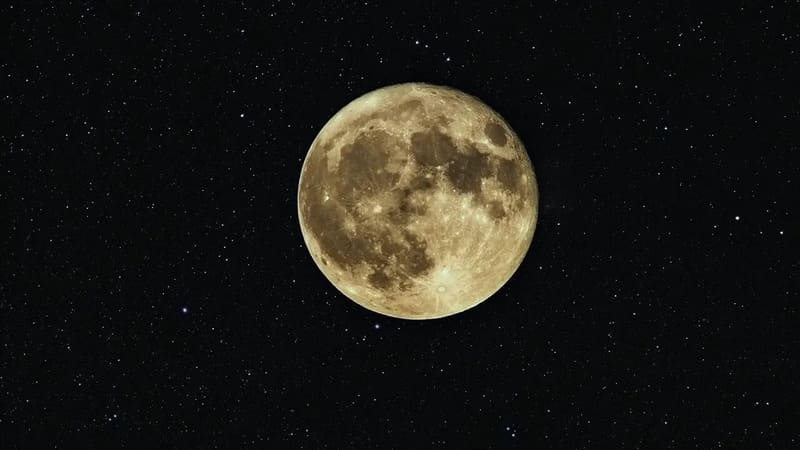
Stargazers like you and I want the best experience. We should plan our stargazing sessions around the moon’s phases.
Can you stargaze with a full moon? Yes, but.
What moon phase is best for stargazing? The best time for stargazing is during a new moon when the moon is not visible in the night sky. During this time, the sky is at its darkest, and the stars and other celestial objects are much easier to see.
By understanding how the moon’s phases affect stargazing, we enthusiasts can plan our sessions accordingly and get the most out of our stargazing experience.
Related content: Can You Do Astrophotography with a Full Moon?
FREE STARGAZING CHECKLIST
My 5-page Stargazing Checklist will enhance your astronomical observations.
Follow this free checklist to navigate the night sky with confidence, clarity, and a sense of preparedness for a rewarding stargazing experience.

The Impact of a Full Moon on Stargazing
Brightness and Contrast

During a full moon, the moon’s light illuminates the sky, which makes it much brighter than usual. This brightness can cause issues for us stargazers, as the bright moonlight can wash out the light from fainter stars and celestial objects. Additionally, the moon’s brightness can reduce the contrast between stars and the night sky, making it more difficult to distinguish between them.
For these reasons, stargazing during full moon is discouraged.
Skyglow
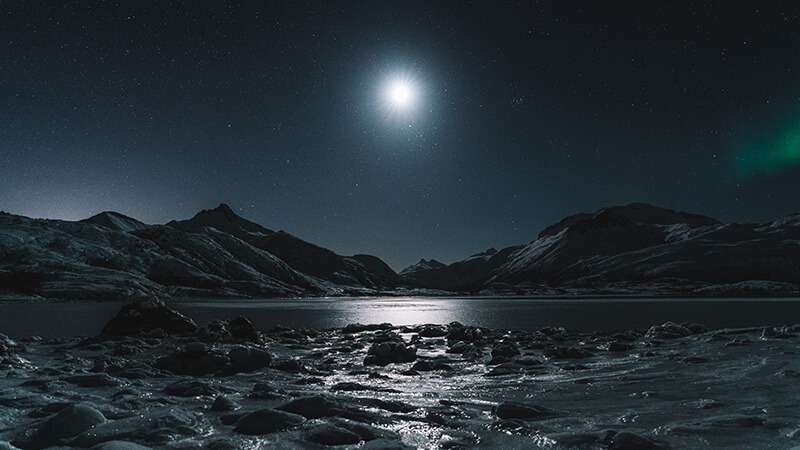
The light from a full moon can also cause skyglow, a type of light pollution that occurs when particles in the atmosphere scatter light. Skyglow can make the sky appear hazy or washed out, reducing the visibility of stars and other celestial objects.
Can you see stars with a full moon? Yes, but not nearly as well.
Visibility of Faint Objects
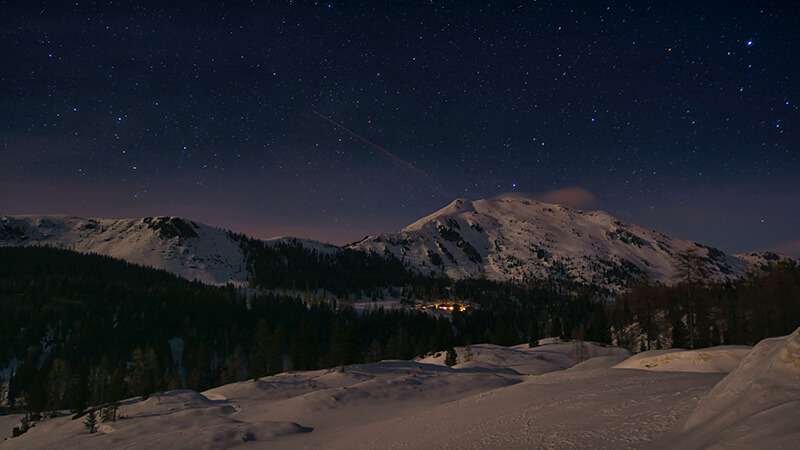
A full moon can be particularly problematic for those of us interested in observing fainter objects such as galaxies, nebulae, and star clusters. These objects require a dark sky with minimal light pollution to be visible, and the bright light from a full moon can make them difficult or impossible to see.
3 Easy Tips for Stargazing During a Full Moon
1. Choose the Right Location
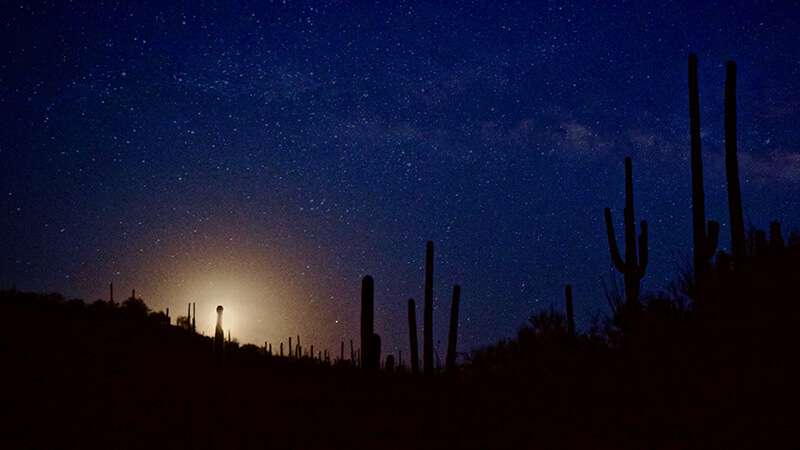
When stargazing during a full moon, choosing a location with as little light pollution as possible is essential. The right site means avoiding areas with bright streetlights or buildings. Head to a park or open field away from the city lights for the best views.
2. Focus on Bright Objects
During a full moon, its brightness can make it challenging to see fainter stars. Instead, focus on brighter objects like planets, which will still be visible. Look for Mercury, Venus, Mars, Jupiter, and Saturn. You can also spot constellations like Orion or the Big Dipper.
3. Use Filters and Accessories

If you’re having trouble seeing objects during a full moon, try using filters or accessories like a moon filter or a telescope with a larger aperture. These can help reduce the moon’s glare and make seeing other objects in the night sky easier.
Remember, stargazing during a full moon may not be the ideal time to see fainter stars, but it can still be an excellent opportunity to view bright objects and learn more about the night sky.
You can still have a rewarding stargazing experience with the right equipment and location.
Bonus Tip: Best Moon Phase for Stargazing
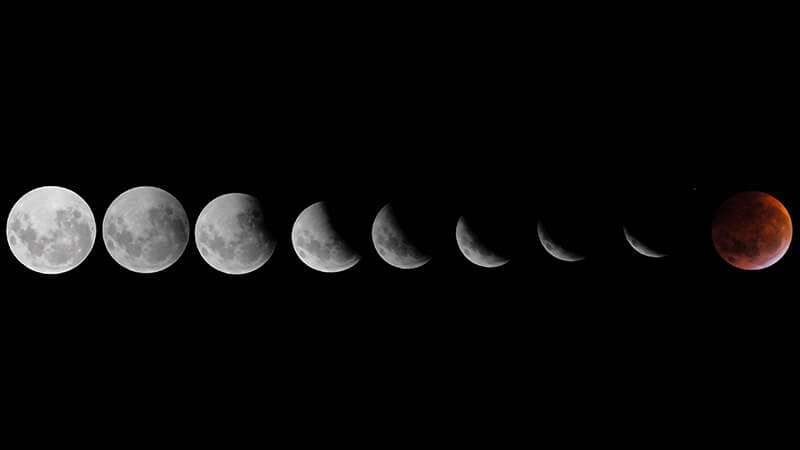
Regarding stargazing, the moon phase can significantly impact what you see in the night sky. While it is possible to stargaze during a full moon, there are better times for observing celestial objects such as stars, galaxies, and nebulae.
So when is the best time for stargazing?
The best time for stargazing is during a new moon or the days immediately before and after. During a new moon, the sky is at its darkest, making it easier to see fainter objects.
The waxing and waning crescent phases are also great times for stargazing since the moon’s effect on the sky is at its mildest.
However, if you still want to stargaze during a full moon, you can observe the brightest stars and planets visible to the naked eye. Planets such as Mercury, Venus, Mars, Jupiter, and Saturn will be visible, along with the Moon, Sirius, Betelgeuse, and some constellations.
Frequently Asked Questions
What is the best time to stargaze during a full moon?
During a full moon, the best time to stargaze is after the moon sets. The bright moonlight can make it challenging to see fainter stars. It would help if you waited until the moon sets to allow for better visibility of the stars.
Does a full moon affect the visibility of planets?
While a full moon can make it harder to see fainter stars, it doesn’t necessarily affect the visibility of planets. Planets are much brighter than stars and can still be seen during a full moon if the sky is clear.
Can you still stargaze during a full moon?
Yes, you can still stargaze during a full moon. While the moon’s brightness can make it more problematic to see fainter stars, it can also create a beautiful backdrop for brighter stars and planets. Additionally, some stargazers enjoy observing the moon itself during a full moon.
But, can you use a telescope to see the flag on the moon?
What is the best moon for stargazing?
The best moon for stargazing is a New Moon. During a New Moon, the moon is positioned between the Earth and the Sun, and its illuminated side faces away from us, making it appear as a thin crescent or not visible at all in the night sky. This means that there is minimal moonlight to interfere with the visibility of stars and other celestial objects, making it an ideal time for stargazing and observing deep-sky objects like galaxies, nebulae, and star clusters.
Summary
Thank you for reading my article “Does a full moon affect stargazing?”
Stargazing during a full moon can be a beautiful experience, but it may not be the best time for observing stars.
The moon’s bright light can make it difficult to see the fainter stars and constellations. However, a full moon can be an excellent time if you aim to observe the moon.
Timing is also crucial when it comes to stargazing. The moon’s phase can significantly affect stargazing, and it’s best to go when it is not too bright.
A half-full moon is ideal for stargazing as it provides enough light to see but not so much that it drowns out the stars.
It’s important to remember that stargazing is a unique experience, and everyone has their preferences. While a full moon may not be the best time for stargazing, it can still be a beautiful sight. You may also consider throwing a stargazing party during a full moon.
Ultimately, deciding to stargaze during a full moon is entirely up to you, and you should do what brings you joy!
Read additional articles in my Night Sky series:




